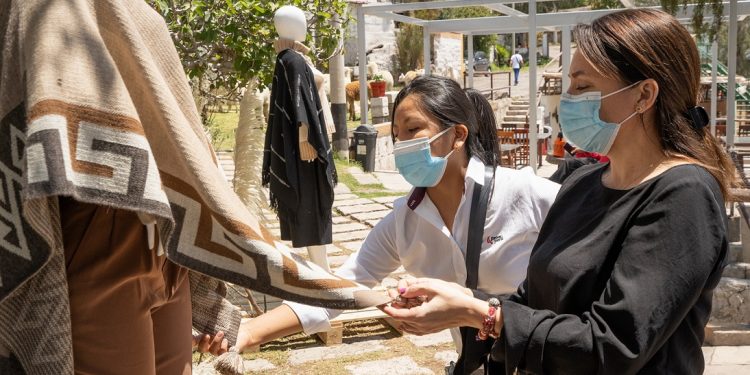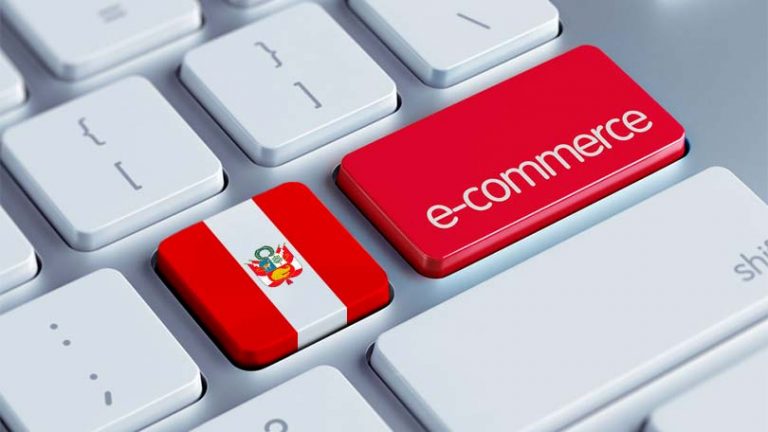
As the whole world is improving along with technology, Peru is not far behind, the Andean country is entering an era of digitization and following global trends, since the advancement of technology allows and facilitates many day-to-day activities of people (Dempsey, 2019). Despite the fact that for 2018, Peru only managed to obtain 7.6% in trading services compared to more technologically advanced countries such as the United Kingdom, which represented 20%, the country continues to develop to advance in that area (Dempsey, 2019). However, taking advantage of the electronic boom and how due to COVID-19 many things become digitalized, at the fashion festival in Peru, Peru Moda Deco and Alpaca Fiesta, one of the most important fashion and textile shows in Peru, it closed with a golden brooch (Martin, 2021). The festival was done digitally with a completely virtual exhibition where more than 300 companies and brands experts in apparel, jewelry, footwear, cotton and alpaca fiber presented their futuristic products and ideas (Martin, 2021). These brands were also exposed to representatives of globally recognized brands such as Christian Dior, The Citizenry, Hartford and Speedo also allowed viewers from other parts of the world to enjoy their virtual festival as they were unable to travel with health restrictions due to COVID-19 guidelines (Martin, 2021).
One of the commercial activities that has increased in the retail and fashion industry is the electronic commerce or e-commerce, which is any commercial activity of buying and selling goods and/or services using the internet as a channel (Bloomenthal, 2022). These services can be operated and conducted in different ways, either by smartphones, computers, tablets and other smart services (Bloomenthal, 2022). During recent years e-commerce has been growing stronger in Latin America, figures show that there were sales from $18 billion USD for 2009 and $53.2 billion for 2018 (Granada, 2020). Peru, among Latin America is positioned as the sixth largest ecommerce market although the country still lacks of the market, however these numbers can be broken down, to put into short words; Peru in 2009 represented 1.27% of that value and for the 2018’s numbers, the country represented 5% of the whole continent in which a growth is seen (Romero, 2020). The advances in technology in general, as well as smartphones and internet transactions have made the ecommerce industry to grow, with speculation and projections that for 2021 to 2025 there may be an increase of 21%, this it would be like US$27.8 billion (Wood, 2022). It is also indicated that Peru is very well positioned among other Latin American countries, for example, an analysis by Americas Market Intelligence shows that Peru, in general, a person can spend up to $594 per year on e-commerce, while other countries in Latin America on person, in average, spend $473 (2022). The authors say “In contrast, other LatAm economies have a lower share of e-commerce spending per capita, such as: Colombia with 10%, Chile (9%), Argentina (7%), and Mexico (7%)” (Americas Market Intelligence, 2022).
The Peruvian Chamber of Electronic Commerce or CAPECE (Camara Peruana de Comercio Electronico), by its acronym in Spanish released a report based on the grow of E-Commerce in Peru, in where it states that most estimates of the volume of the e-commerce market in the country are based on retail sales, but online purchases go much further than that. In the report there is a study, which shows the growth of categories that are part of the e-commerce market (CAPECE, 2020).
These categories are followed with their respective percentage of online purchases (CAPECE, 2020):
- Furniture and Appliances (23%)
- Food and personal care (22%)
- Games and Hobbies (22%)
- Fashion and beauty (18%)
- Electronics and technology (15%)
- Digital music (12%)
- Video games (9.6%)
- Travel (7.9%)
Most of these transactions are made with credit cards by Peruvian citizens, covering about 40% of transactions just above debit cards representing 20% (Americas Market Intelligence, 2022). But of course it has to be mentioned about the global impact that caused many changes and shopping habits, the COVID-19 pandemic. This health crisis that began in March 2020, due to the total lockdown of the entire country, things that were done in person, such as working or going to gym, or studying, were converted to electronically, including shopping (CAPECE, 2021). Thus, increasing for 2021, according to the CAPECE annual report, causing retail consumption such as fashion and clothing to have increased by 4.45% more compared to the figures shown previously for the year 2019, leaving the category in decline in travel and tourism (CAPECE, 2021). Other impacts due to COVID-19 is that not all about e-commerce is reliable to everyone and every consumer, for example according to Romero (2020) “as navigation can be a barrier at the time of purchase” although consumers find it easier to buy online rather than going physically to the store. In addition, thanks to online purchases there is also an increase in deliveries and taxis services to provide and extend online shopping purchases where it has been possible to maximize the advantage of this new channel in which it is also necessary to highlight since businesses are looking for ways to enforce this channel (Romero, 2020).



